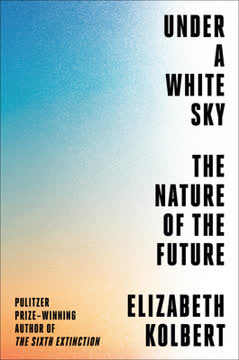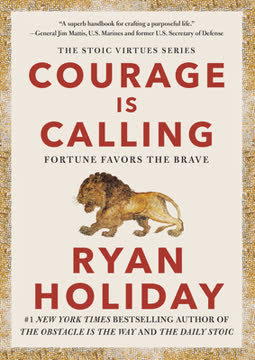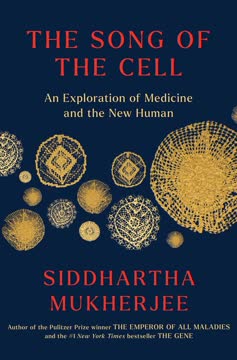Key Takeaways
1. Biology Flows Downhill: Generativity is the Real Fountain of Youth
In his exquisite phrasing, “biology flows downhill.”
The Generative Imperative. The most profound way to conquer death is not through technological immortality, but through generativity—investing in and connecting with the next generation. This instinct, deeply rooted in our biology, drives us to pass on what we've learned, ensuring our influence endures.
Rejecting the False Promise of Endless Youth. Silicon Valley's obsession with radical life extension is a misguided quest that cheats life by denying its natural cycle. True happiness and understanding begin not with denying death, but with accepting it and living accordingly.
The Sweet Spot of Time. The shadows slanting eastward represent the perfect intersection of time lived, time left to live, and our connection to the time beyond our lives. It's that season when we know what matters and have the time and capacity—and the motivation—to do something significant with it.
2. Relationships Matter: Love Endures Beyond a Single Lifetime
Death ends a life, not a relationship.
The Primacy of Relationships. As we move through midlife, the awareness of limited time intensifies the focus on close relationships. These bonds, nurtured with care and intention, transcend our individual existence, living on in the hearts and actions of those we've touched.
The Harvard Study of Adult Development. This longitudinal study, spanning over three-quarters of a century, underscores the critical role of relationships in well-being, particularly as we age. Happiness is love, full stop, and those who invest in caring for and developing the next generation are three times as likely to be happy.
The Power of Connection. The Big Brothers Big Sisters study demonstrated the profound impact of caring-adult relationships on young people's lives, showing significant differences in drug use, school truancy, and violent behavior. These connections, built on time and trust, offer a lifeline of support and guidance.
3. Age Apartheid: The Unintended Consequences of Segregation
Probably at no period and in no culture have the old ever been so completely rejected as in our own country, during the last generation.
The Rise of Age Segregation. The 20th century witnessed a shift from age integration to age segregation, driven by factors like industrialization, standardization, and the medicalization of aging. This separation has led to the marginalization of older people and a loss of intergenerational connection.
The Perils of Separation. Age segregation contributes to loneliness, unrealistic views of aging among young people, and a loss of shared wisdom and experience. It also reinforces negative stereotypes and limits opportunities for mutual support and understanding.
Reversing the Trend. We must actively work to dismantle age apartheid by creating communities, schools, and workplaces that foster intergenerational interaction. This requires a conscious effort to integrate the generations and challenge the cultural norms that perpetuate separation.
4. An Army for Youth: Mobilizing Experience for the Next Generation
We believe, without being immodest, that the large numbers of us over age 65 constitute a rich reservoir of talent, experience and commitment potentially available to the society.
The Untapped Potential of Older Adults. Older people possess a wealth of experience, skills, and wisdom that can be invaluable to younger generations. Mobilizing this talent can address critical social needs and provide older adults with a sense of purpose and fulfillment.
Experience Corps: A Model for Engagement. This program demonstrates the power of engaging older adults as tutors and mentors in low-income schools. The results include improved literacy skills for students and enhanced physical and mental well-being for the older volunteers.
Beyond Tutoring: The Power of Relationships. The success of Experience Corps lies not only in academic support but also in the relationships forged between older adults and young people. These bonds provide caring, connection, and support, enriching the lives of both generations.
5. Dreaming and Scheming: Innovation for Intergenerational Harmony
Sit down here. Let’s dream and scheme.
The Need for Creative Solutions. To address the challenges of an aging society, we need innovative approaches that bring the generations together for mutual benefit. This requires a shift in mindset and a willingness to challenge the status quo.
Three Types of Innovators:
- Inventors: Creating radical new ideas for intergenerational living and connection
- Integrators: Bringing existing age-segregated institutions together
- Infiltrators: Injecting older or younger people into previously age-segregated settings
Examples of Innovation. From Treehouse Foundation's intergenerational village to Judson Manor's artist-in-residence program, these initiatives demonstrate the power of proximity and shared purpose in fostering meaningful connections.
6. A Village for All Ages: Global Models of Intergenerational Living
There is birth and there is death. At both ends, we all need someone to tend to us.
Learning from Abroad. Examining intergenerational initiatives in other countries, such as Singapore and the Netherlands, can provide valuable insights and inspiration. These models demonstrate the potential for creating age-integrated communities and fostering a sense of shared responsibility.
Singapore's Grand Plan. This ambitious initiative aims to transform Singapore into an age-friendly society by investing in programs that promote intergenerational connection, lifelong learning, and social inclusion. The plan includes colocated eldercare and childcare facilities, as well as incentives for community organizations to engage older volunteers.
The Importance of a Holistic Approach. Successful intergenerational initiatives address not only the practical needs of older and younger people but also their emotional and social well-being. This requires creating environments that foster genuine relationships and a sense of belonging.
7. Rerouting the River of Life: Integrating Generations for Mutual Benefit
America today faces breathtaking opportunities disguised as insoluble problems.
The Power of Proximity. Creating opportunities for regular interaction between older and younger people is essential for building meaningful relationships. This can be achieved through age-integrated housing, colocated facilities, and community-based programs.
The Importance of Reciprocity. Successful intergenerational initiatives are mutually beneficial, providing both older and younger people with opportunities for growth, learning, and connection. This requires recognizing the unique assets and needs of each generation.
The Need for Systemic Change. To truly transform society, we must move beyond isolated programs and create systemic changes that promote age integration in all aspects of life. This includes reforming policies, challenging stereotypes, and fostering a culture of intergenerational respect and collaboration.
8. Living Mortal: The Wisdom of Accepting Our Finite Existence
Remembering that I’ll be dead soon is the most important tool I’ve ever encountered to help me make the big choices in life.
Embracing Mortality. Accepting our finite existence allows us to prioritize what truly matters: relationships, purpose, and legacy. This awareness can guide our decisions and inspire us to live more fully in the present.
The Eulogy Virtues. Focusing on character, love, and contribution helps us live a life worthy of remembrance. By aligning our actions with our values, we can create a lasting impact on the world and leave a positive legacy for future generations.
The Power of Generativity. Investing in the next generation is not only a way to live on but also a source of joy, fulfillment, and meaning in later life. By sharing our wisdom, experience, and resources, we can help shape a better future for all.
9. We Wait Too Long: The Urgency of Generative Action
What I want… is a long youthfulness of spirit. It doesn’t seem much to ask—but it is everything.
The Time for Action Is Now. We cannot afford to delay in addressing the challenges of an aging society and the needs of future generations. The time to act is now, before opportunities are lost and divisions deepen.
The Call to Generativity. Each of us has a responsibility to contribute to the well-being of future generations. This can take many forms, from mentoring a young person to volunteering in the community to advocating for policies that support children and families.
A Legacy of Love. In the end, what matters most is the love we share and the connections we forge. By investing in relationships and leaving a positive impact on the lives of others, we can create a legacy that endures beyond our own time.
Last updated:
Review Summary
How to Live Forever explores intergenerational connections, advocating for older adults to invest in younger generations. Readers appreciate the book's anecdotes, research, and inspiring examples of programs connecting age groups. Many found it motivating and thought-provoking, praising its ideas for enriching lives across generations. Some readers felt it was repetitive or anecdotal, expecting more research-based content. Overall, the book is well-received for its exploration of purposeful aging and multigenerational engagement, though opinions vary on its execution and depth.
Similar Books








Download PDF
Download EPUB
.epub digital book format is ideal for reading ebooks on phones, tablets, and e-readers.




